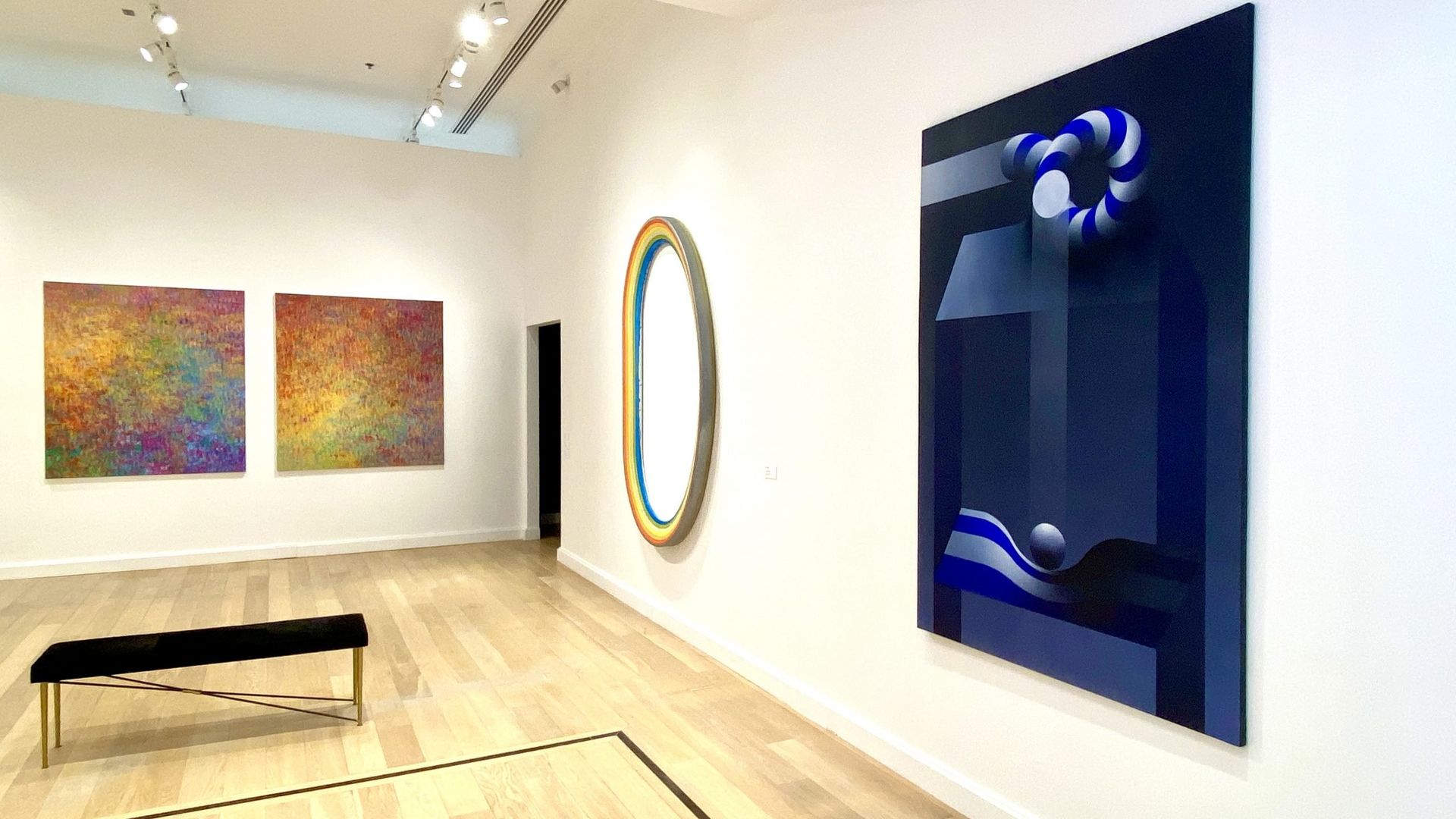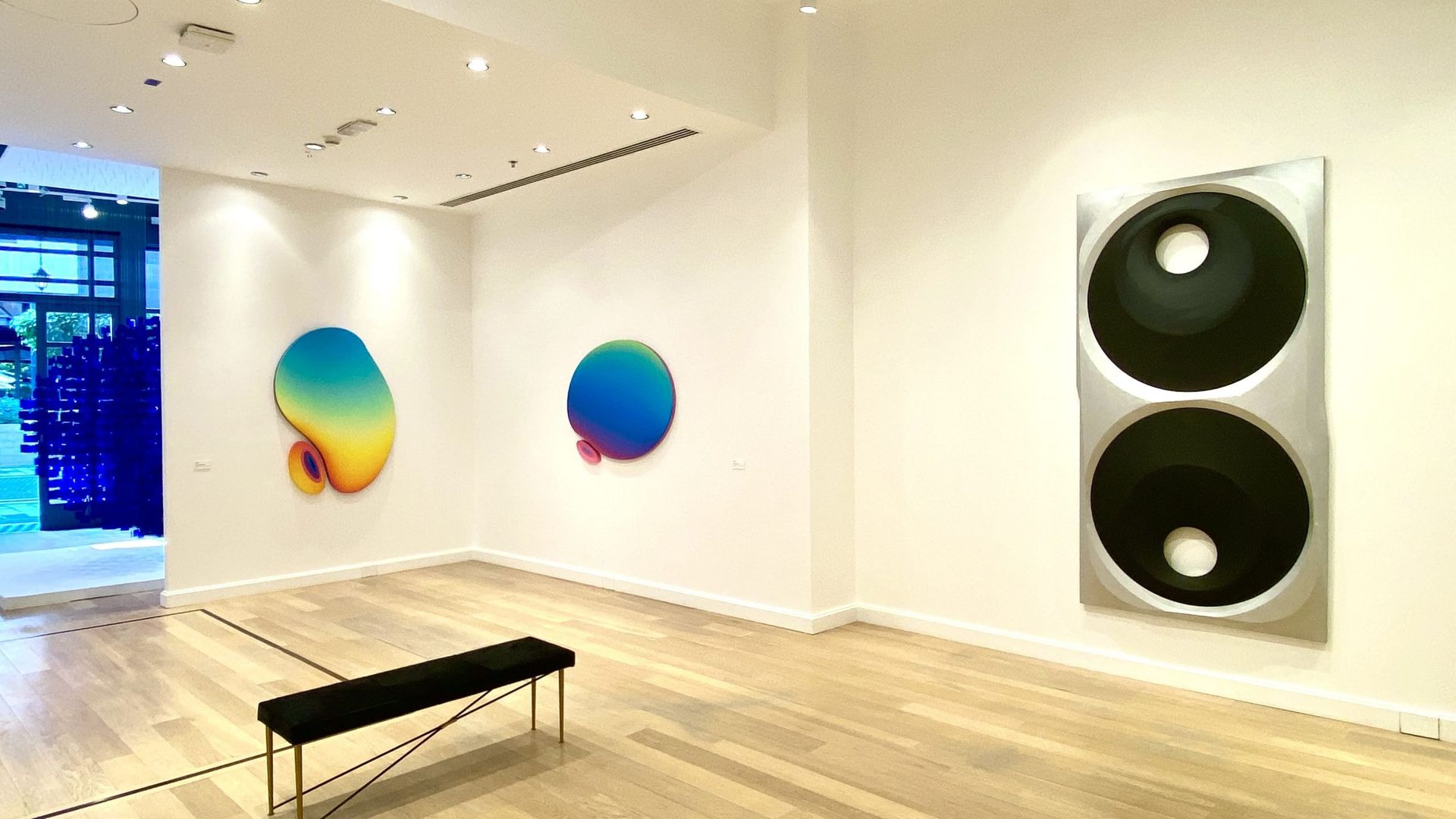
Elemental Perception: A Group Exhibition
9th December 2022 – 15th January 2023
Galloire Presents
Elemental Perception
A Group Exhibition
Julio Le Parc, Blair Thurman, Jean-Baptiste Bernadet, Jan Kalab, Miguel Chevalier
Exhibition Text By Nadine Khalil
“Look at that wall carefully and you’ll of course see that its whiteness is not of just one tone. The light is streaming in from the window, so that it’s a brighter white to that side, fading into grays over to this side. There are blues and greens and even purples…if I were to daub a slash of red paint in that corner, it would change the whiteness of the entire field. Now, a slash of red paint is a major gesture, and you’d almost need something that extreme to see the contrast in this situation…for you to perceive how the whiteness of even a particular spot on the wall changes as you move through the room, or as the sun moves through its day.”
This quote by 94-year-old Robert Irwin in Seeing is Forgetting the Name of the Thing One Sees by Lawrence Weschler demonstrates how the American artist, a prominent figure in the Light and Space movement, has spent his everyday life considering light and its materiality.
Argentinian artist Julio Le Parc is the same age as Irwin but belongs to a different cultural context. Influenced by Spazialismo, the Concrete art movement and later Op and Kinetic Art, his oeuvre includes labyrinthine installations, mobiles and interactive games in playful or disruptive modes of encounter. While he stands out as the most eminent artist in Galloire’s current group show, his work traces a historical trajectory from which springs a shared language of light as movement and form. In Elemental Perception, a grammar of perceptual fields by five artists interrogates our relationship with an external world that is in constant flux.
With these different drafts on how we see and what we see, the primacy of the naked eye is evident, as well as an understanding of the technologies of sight – insofar as what we see fluctuates before our eyes. In the exhibition are not just singular, chromatic objects; there are compositions that change according to our presence in the spaces around them. Take Le Parc’s 2013 Sphère bleu foncé, which traps, refracts and diffuses midnight blue through hundreds of tinted Plexiglas slats hanging on strings. The slightest movement of air or the body impacts the sculpture, its optical effects and surroundings. Or Miguel Chevalier’s 2015 VR work, Méta-Cités, which shifts attention to an imagined urban universe you can navigate virtually through generative images. Its limitless networks of cities proliferating in all directions situate the body in cyberspace. A frozen moment looks like a Driss Ouahahi painting in 3D – all streaming lines and evocations of dimension.
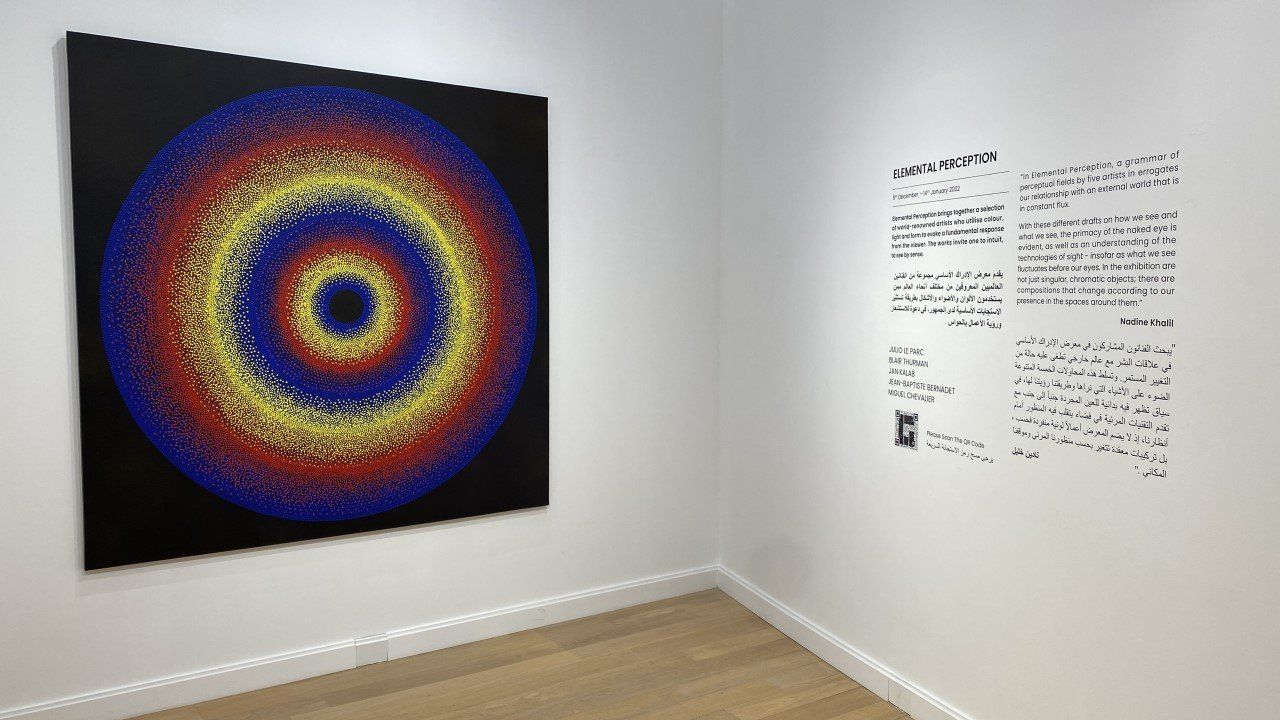
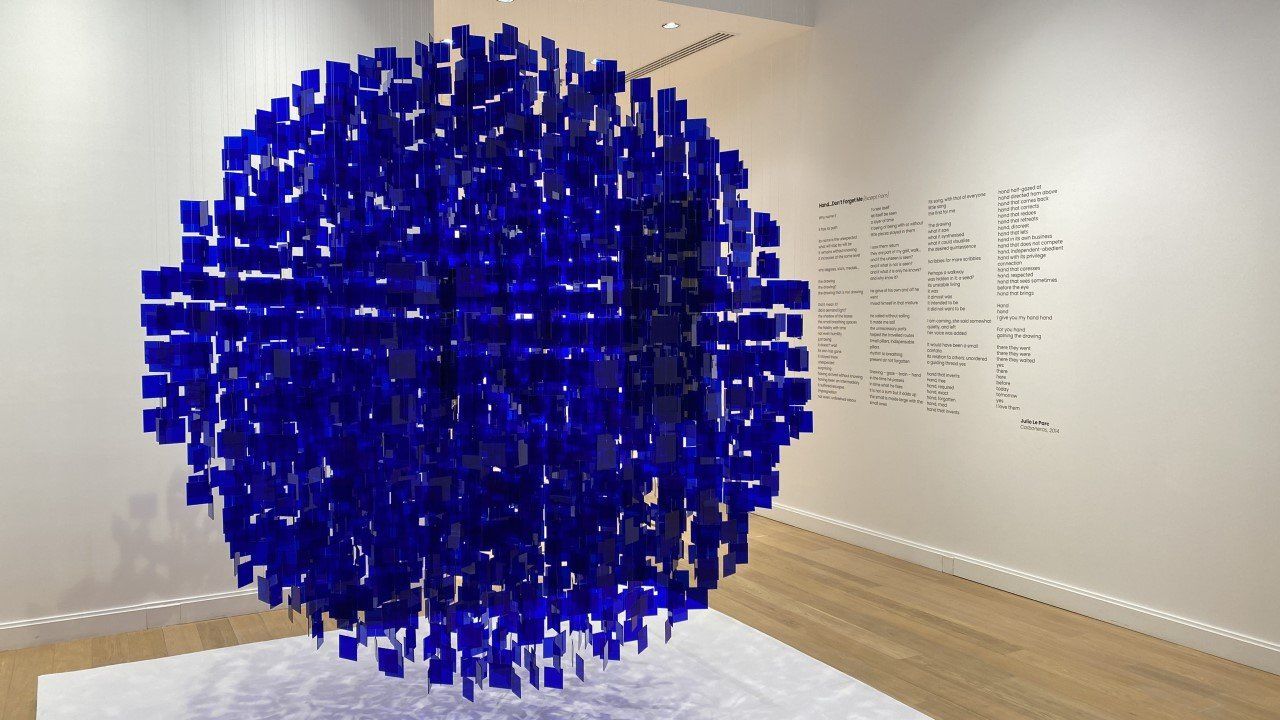
Without a fixed reference point, Méta-Cités’ futurity is an abstract megalopolis that’s not rooted in a specific time or place. Yet tinged with utopia, the series draws from 1970s urban planning models for mobility and traffic circulation. Chevalier’s comment on globalization and unknowable urban transformation is especially relevant in a place like Dubai, and as with Le Parc, the work reflects the evolution of a pioneering artist. Chevalier has been working with the digital medium since the 1980s. Inspired by both natural and artificial environments, his complex, structural compositions have engendered fractal flowers, digital arabesques and a virtual herbarium.
While nature is embedded in some of the artists’ works – such as Jan Kalab’s 2022 biomorphic forms (evident in works like Deep Ocean Medusa and Aqua Amoeba), or more abstractly in Jean-Baptiste Bernadet’s 2022 Untitled (Fugue) paintings, which lend an impression of hazy landscapes – these are far from representational works. Coded by color, they gesture towards a visual polyphony. Bernadet’s atmospheric work especially is part of a signature series that unsettles the gaze in oscillating, moody, and furtive brushstrokes. “I think I want my paintings to be solid and hold a wall, act on their surroundings and on the viewer in a very physical way, imposing silence, clear as a sound, but at the same time I want them to appear as if they are on the verge of disappearance, corrupted like memories, unstable like feelings,” the artist has stated. Both vivid and dissolute, he plays with colour-saturation in a flurry of mark-making to offer the veneer of sunset, an evanescent autumn, a field of flowers, a rippling lake.
In contrast, Le Parc’s 2017 Alchimie painting conjures pointillism in repetitive, cyclical gradations from the 14 shades that he has been using since 1959, as part of his research on the legibility and organizing principles of colour. Le Parc’s painting converses with Jan Kalab’s luminous colour fields, which push further into organic-looking sculptures with fluid contours. The Czech artist, who began in graffiti and street art, is the youngest in the show. His joyful compositions embody volume and motion (like the radiating 2022 Orange Afterglow), brimming with the kind of fluorescence that references backlit screens or glow-in-the-dark marine creatures.
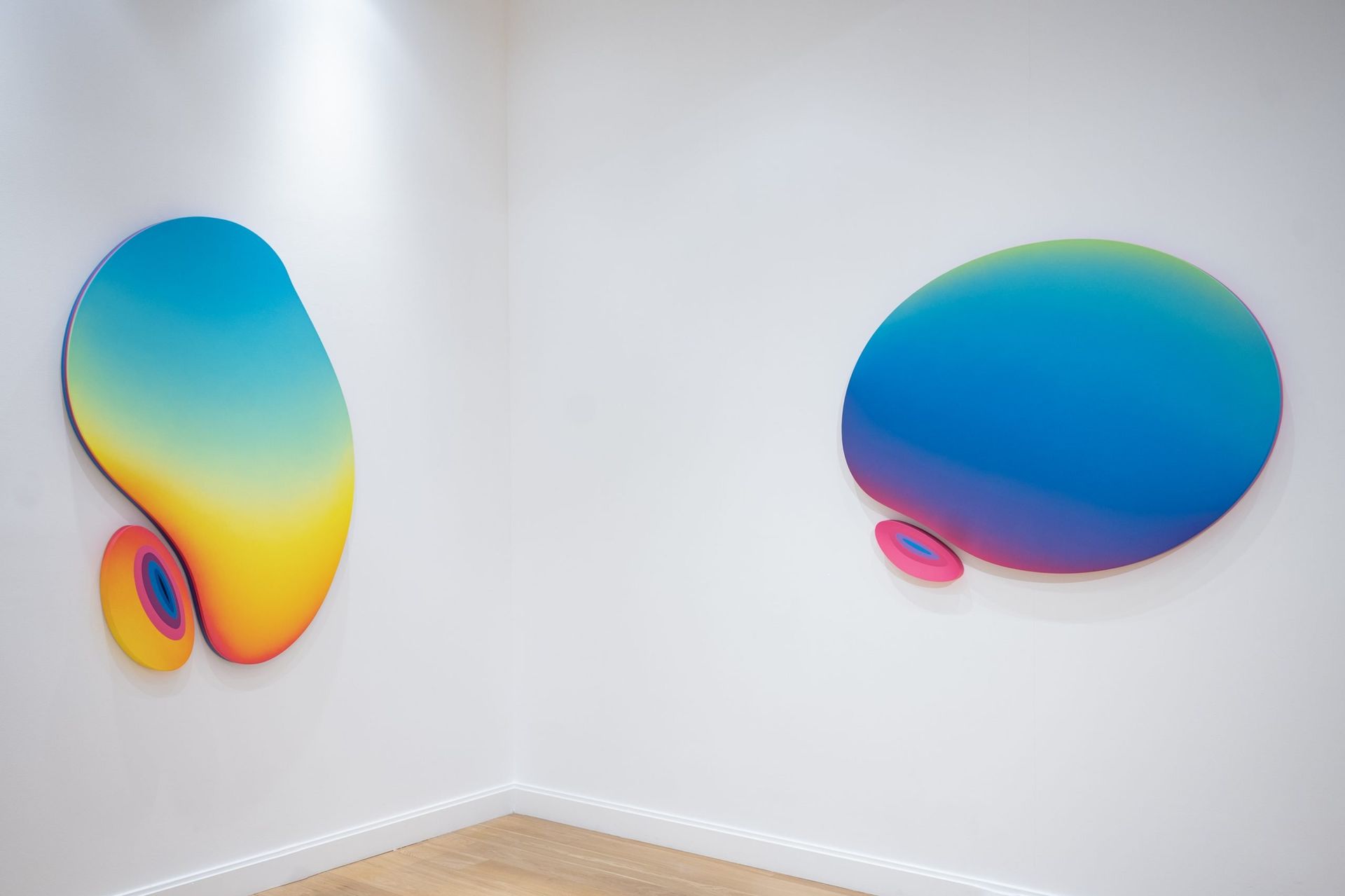
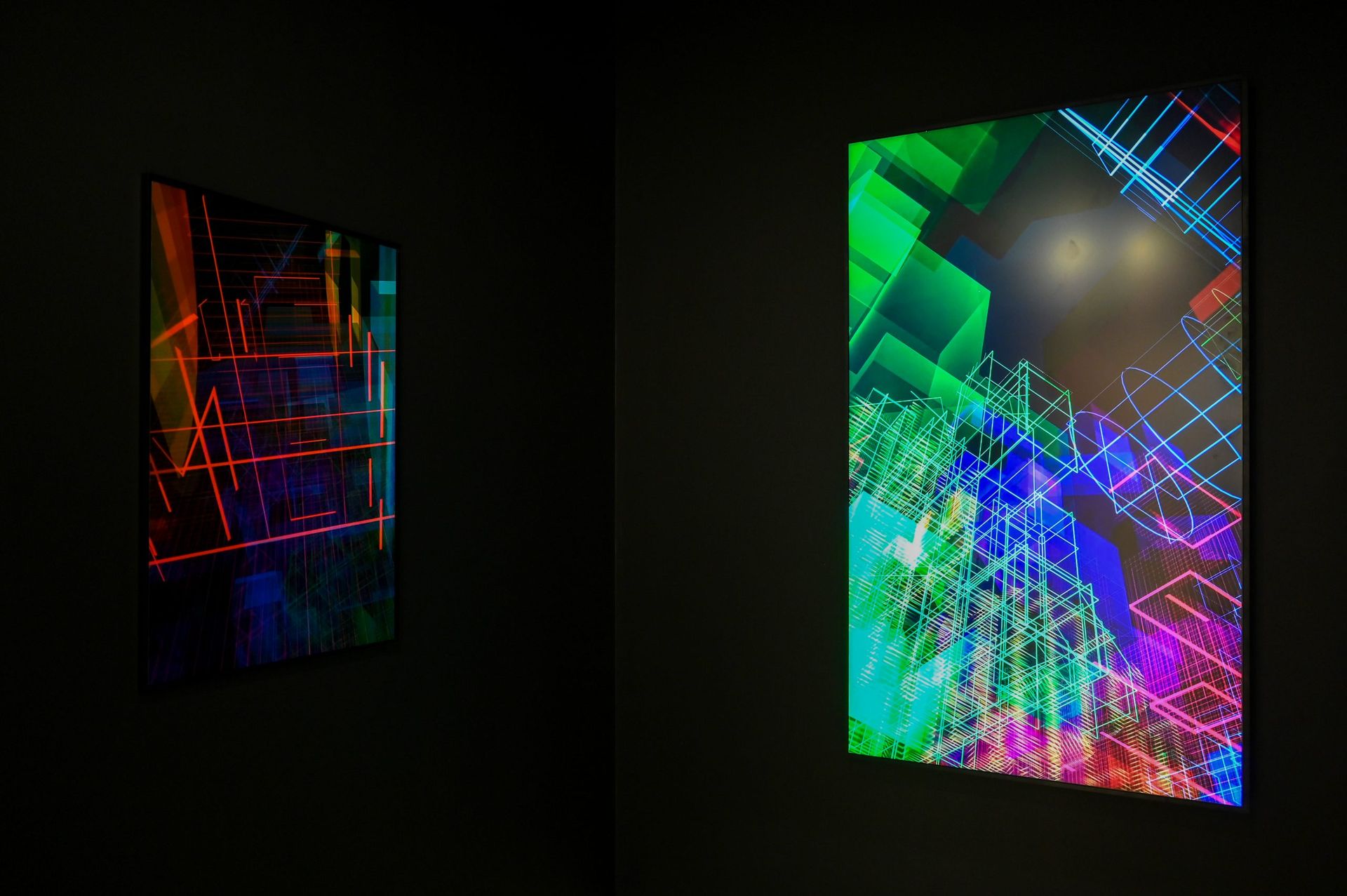
Green Light Field, a 2022 bendy grid of distorted circles by Kalab, embodies the kind of shape-shifting experimentation you find in Blair Thurman’s shaped canvases. His Pop-Minimalist aesthetic is an ode to Americana, the language of youth, car culture and the readymade, communicating with the viewer not just through graphic language but also his titles. Night Vision (2022), for example, comprises two large black circles like speakers with holes on either side. In this way, Thurman collapses image with object – or the thing with the representation of a thing. He is nostalgic for the metallic Spectraflame finishes of the short-lived Hot Wheels toy cars from the late 1960s. His various derivations of circuits, such as the 2022 rainbow-coloured Thin Man on show, evoke a racetrack to infinity and endless speed.
In Le Parc’s 1986 Modulations, the oldest work in the exhibition, an airbrushed technique creates the illusion of cylindrical pathways and tunnels emerging from darkness, hinting at a more internal, maze-like kind of movement. It recalls Plato’s Allegory of the Cave, which I once discussed with master of light James Turrell, as an analogy of our perception: “I am interested in where the light inside, as in the light of the lucid dream, meets the so-called light outside,” Turrell said. In a way, this is the space in which the works in this exhibition meet.
